Everest Base Camp Trek is one of the famous trekking destinations for trekkers all around the world. Nepal is popularly known as the home of the world’s highest peak, Mount Everest, rigidly standing at 8,848.86 m above sea level.
Every year thousands of trekking enthusiasts visit Nepal, either just to have a glimpse of Mt. Everest aka Sagarmatha, or to trek Everest Base Camp.
While trekking to Everest Base Camp, you will walk past different glaciers, scattered villages, and lush Alpine vegetation.
From the low altitudes to the snow-clad mountains, this trek is indeed an adventure of a lifetime. Nestled deep in the Himalayas, this highest peak in the world straddles the border between Nepal and Tibet.
Everest Base Camp (EBC) is heaven for hikers/trekkers and is one of the most visited trekking destinations in the world.
Along with the captivating view of the snow-capped mountains like Mt. Lhotse, Cho Oyu, and Makalu and fantastic trekking facilities, the biggest charm of the EBC trek is that you will get the magnificent view of Mt. Everest itself.
Trekking to EBC may take somewhere between 10 days to 2 weeks. The duration of the trip depends on how well you can acclimatize.
You need to be prepared for all the adventures which may also include some challenges you may face at higher altitudes.
There are many things you need to consider before you plan for the trek. Make your Everest Base Camp Trek an enjoyable and memorable trek with the help of this ultimate guide for trekking to Everest Base Camp.
Highlights
- Trek to Everest Base Camp altitude of 5,550 meters and enjoy the majestic view of the world’s highest peak, Mount Everest (8,848.86 meters).
- The best place to see is Kala Patthar (5,550 meters) or Gokyo Ri (5,357 meters).
- Learn about the Sherpa culture.
- Magnificent view of Khumbu glacier (5,340 meters).
- Explore Sagarmatha National Park, a site listed in the UNESCO World Heritage Sites.
- View the amazing sunset over Everest.
- Visit one of the most dangerous airports in the world, Lukla Airport.
- Stay at Everest View Hotel, the hotel located at the highest altitude in the world.
Everest Base Camp Trek Route
The altitude profile depends on the travel packages that you undertake. Your trek starts from Kathmandu, which is at an altitude of 1,350 meters.
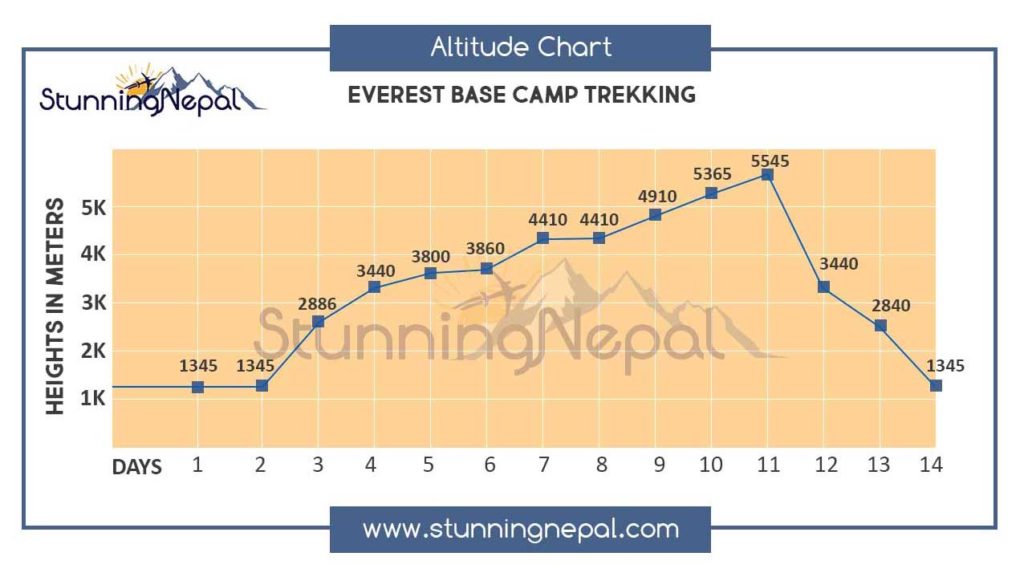
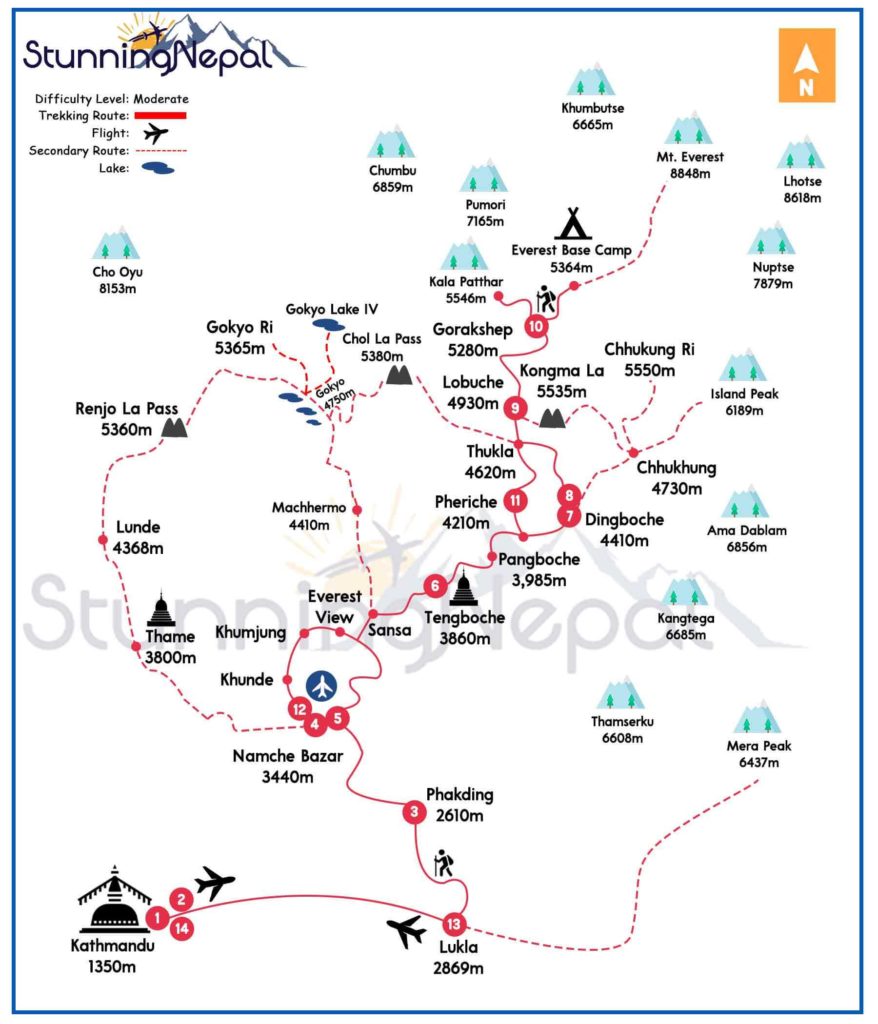
There are different routes for the Everest Base Camp trek. Here’s a glimpse of the various trekking routes available in the Everest region.
1. Everest Heli Trek
Everest Heli Trek is the Trek to EBC by Helicopter. This helicopter trek is perfect for people who want to quickly explore the EBC region without long trekking. You don’t have to walk at a very high altitude, so don’t worry about altitude sickness.

This special trek starts from the capital city of Nepal, Kathmandu (1400 meters) through a thrilling flight to Lukla airport (2800 meters).
Then, your next destination is Phadking, 200 meters down from Lukla. From Phadking, you will go to Namche Bazaar (3441 meters), a city-like place prominently featured in movies like Everest. Afterward, you will go to Thame, which lies at an altitude of 3800 meters.
From Namche Bazaar, you will head to Base Camp and Kala Pathar in a helicopter. After the wonderful sightseeing around EBC, we will return to Lukla and then to Kathmandu.
Itinerary Outline
| Days | Itinerary |
|---|---|
| 1 | Kathmandu (1400 meters) |
| 2 | Lukla/ Phakding (2800 meters / 2610 meters) |
| 3 | Namche Bazaar (3441 meters) |
| 4 | Acclimatization at Namche Bazaar |
| 5 | Thame (3800 meters) |
| 6 | Everest Base Camp / Kala Pathar (5365 meters / 5555 meters) |
| 7 | Kathmandu (1400 meters) |
2. Gokyo Valley Trek
This two-week-long trek is perfect for you to spend a long vacation with your friends. Gokyo Valley is a beautiful valley in the Everest region full of mountains and lakes.
Your trek starts from Kathmandu the same as the Heli trek and proceeds with further destinations like Lukla, Phakding, and then Namche Bazaar.
You will have to stop for some time at Namche Bazaar for proper acclimatization before you go to Phortse Thanga, which lies at an altitude of 3680 meters.
Then, you will ascend to Maccherma, which is at 4470 meters. As the altitude increases, you should spend a day in each place for acclimatization.
You will go to the wonderful valley of Gokyo from Machherma. Gokyo Valley is located at the base of one of the Gokyo lakes commonly known as Dudh Pokhari (4790 meters). Then, you will head to Gokyo Ri(5483 meters).
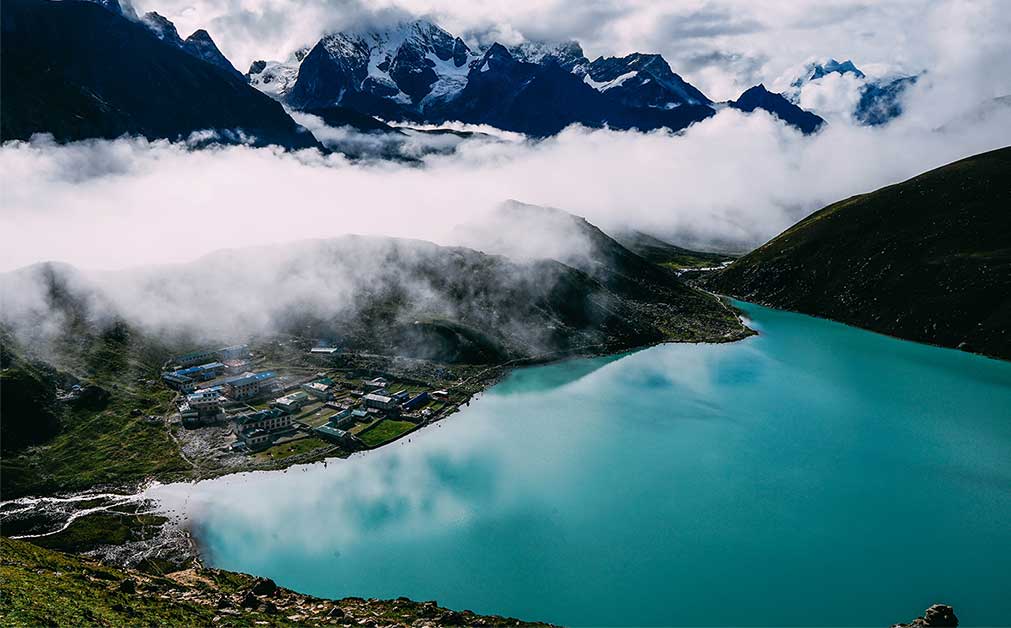
From Gokyo Ri, you will be able to get a beautiful view of Mount Everest, Mount Lhotse, Mt Cho Oyu, and Mount Makalu. All of these mountain peaks are above 8000 meters. From Gokyo Ri, you will hike down to Namche in 2 days.
Itinerary Outline
| Days | Itinerary |
|---|---|
| 1 | Arrive Kathmandu |
| 2 | Kathmandu tour (1400 meters) |
| 3 | Lukla / Phakding (2800 meters / 2610 meters) |
| 4/5 | Namche Bazaar (3441 meters) |
| 6 | Phortse Thanga (3680 meters) |
| 7 | Machherma (4470 meters) |
| 8 | Gokyo (4790 meters) |
| 9 | Gokyo Ri (5483 meters) |
| 10 | Dole (4200 meters) |
| 11 | Khumjung Village (3780 meters) |
| 12 | Lukla (2800 meters) |
| 13 | Kathmandu (1400 meters) |
3. Everest Base Camp with Island Peak Trek
The Island peak trek lasts for 21 days. You need to be well prepared for this extensive trip. Same as the other treks listed above, this trek also starts from Lukla to Namche.
From Namche, it’s time to go to Tengboche which is at a height of 3860 meters. You will know about the spiritual values of the Everest region in the Tengboche region.
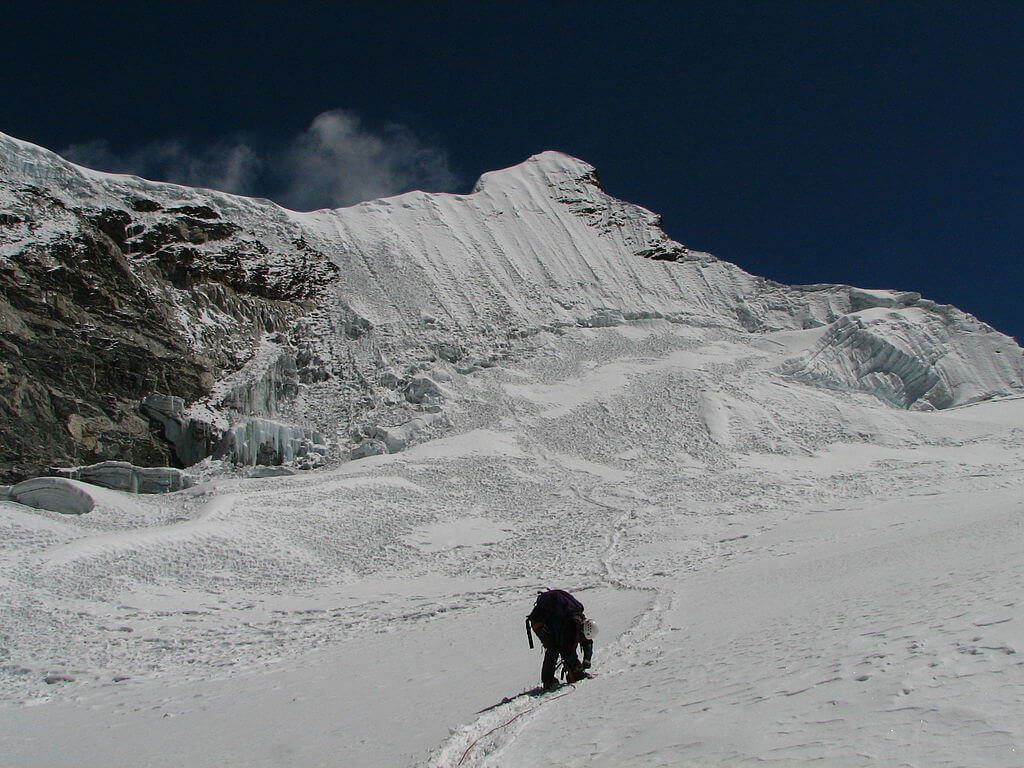
Then the next destination in this trek is Dingboche, a Sherpa village at 4350 meters. From there, you will go to the Nangkartshang Peak, which is above 5000 meters from sea level.
The next day, you will trek down to Lobuche (4910 meters) and then finally to Everest Base Camp (5365 meters). Ascend to Kala Pathar (5555 meters), from where you will get the best view of Mt. Everest.
The final and the topmost challenge in this trek is the Island Peak Base Camp, the highest peak you can reach i.e. 6187 meters. From Island Peak, you will get down through the places down to the Lukla airport.
Itinerary Outline
| Days | Itinerary |
|---|---|
| 1 | Arrive Kathmandu |
| 2 | Kathmandu tour (1400 meters) |
| 3 | Lukla / Phakding (2800 meters / 2610 meters) |
| 4/5 | Namche Bazaar (3441 meters) |
| 6 | Tengboche (3860 meters) |
| 7 | Dingboche (4350 meters) |
| 8 | Nangkartshang Peak (5083 meters) |
| 9 | Lobuche (4910 meters) |
| 10 | Everest Base Camp (5365 meters) |
| 11 | Kala Patthar (5555 meters) |
| 12 | Chhukung (4710 meters) |
| 13 | Island Peak Base Camp (5240 meters) |
| 14 | Island Peak (6187 meters) |
| 15 | Chukung (4710 meters) |
| 16 | Tengboche (3860 meters) |
| 17 | Namche Bazaar / Khumjung (3441 meters) |
| 18/19 | Lukla (2800 meters) |
| 20 | Kathmandu (1400 meters) |
4. Jiri to Everest Base Camp Trek
The classic EBC trek through the Jiri route starts from Kathmandu. You will drive to Jiri (1900 meters) from Kathmandu. You will head to Bhandar, which is at an altitude of 2200m.

Then, you will advance to Sete (2645 meters) & Junbesi (2675 meters). From there, you will go to Nunthala (2440 meters), Kharikhola (2020 meters) Puiyan (2700 meters), and finally to Phakding. You need to stay at each of these places.
Itinerary Outline:
| Days | Itinerary |
|---|---|
| 1 | Arrive Kathmandu |
| 2 | Kathmandu tour (1400 meters) |
| 3 | Jiri (1905 meters) |
| 4 | Bhandar (2200 meters) |
| 5 | Sete (2645 meters) |
| 6 | Junbesi (2675 meters) |
| 7 | Nunthala (2440 meters) |
| 8 | Kharikhola (2020 meters) |
| 9 | Puiyan (2700 meters) |
| 10 | Phadking (2646 meters) |
| 11/12 | Namche Bazaar (3441 meters) |
| 13 | Phortse Thanga (3680 meters) |
| 14 | Machherma (4470 meters) |
| 15 | Gokyo (4790 meters) |
| 16 | Gokyo Ri (5483 meters) |
| 17 | Thangna (4500 meters) |
| 18 | Cho La Pass / Dzongla (5300 meters / 4710 meters) |
| 19 | Lobuche (4910 meters) |
| 20 | Everest Base Camp (5365 meters) |
| 21 | Kala Pathar / Periche (5555 meters / 4200 meters) |
| 22/23 | Lukla (2800 meters) |
| 24 | Kathmandu (1400 meters) |
Everest Base Camp Solo Trekking
The Everest Base Camp trek is the most amazing time you spend on your vacation. The journey full of incredible scenery, unique history, and amazing people, is also the hardest trek in Nepal. However, if done with the right preparation, it can be easily done independently. Also, check out Everest Base Camp Trek Tips which can be helpful for you.
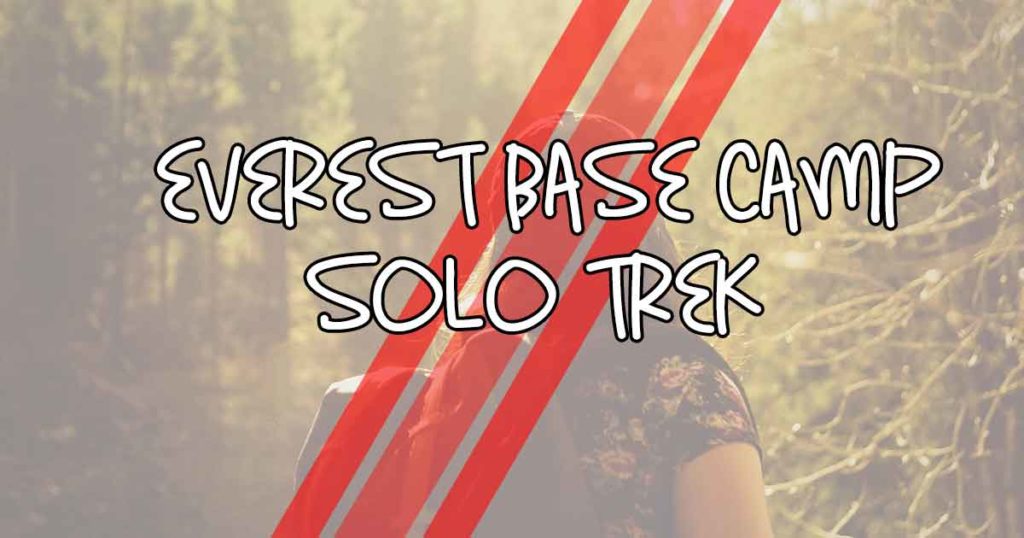
| Advantages of Solo Trek | Disadvantages of Solo Trek |
|---|---|
| Trekking is all about exploring the beautiful natural environment and finding peace while delving into the incredible sceneries. Everest Base Camp Trek alone can be enjoyable and adventurous. | Everything has its pros and cons. The major disadvantage of the Everest Base Camp solo trek is the lack of communication and less knowledge of the surrounding arena. There is a high chance of being harassed or looted. |
| You will get to see the place for as much time as you want. There will be no time restriction and solo trekking will award you with freedom, moving at your own pace, and taking a lot of photos and videos as there is no fixed itinerary to bind you. Your holiday will be like you want. | The difference in language can hamper a lot of your interaction with local people. You may deviate from the right path, and it will be time-consuming. Hotels and lodges will also not trust you, and you may face problems with food and accommodation. There’s a high chance that you fall sick in the mountain region. |
Everest Base Camp Trek Map
A map is the most significant thing you need to carry along on any trek. You can even embark on a solo trip with a reliable and updated map with a detailed trail route to the lap of Mount Everest.

Apart from the regular Lukla to Everest Base Camp trek route, there are also several other itineraries in Solukhumbu. You can take up the challenge through the new trail. If you have the proper knowledge of maps, there is less chance of getting lost in the ridges and forests.
EBC Trek Gear List
Packing bags for the trek is somehow difficult. Considering the weather conditions and the weight you can carry, you should be careful about packing your stuff most needed only. The average weight recommended is 15 to 20 kg.
You can manage your backpack considering your capacity as a heavyweight can make you tired soon enough and you will lose the enjoyment of the trek. Here is the most recommended equipment for Everest Base Camp Trek:
- Sturdy trekking boots
- Trekking shirt (long sleeve), trousers (waterproof), and shorts
- Pair of thermal, fleece pants, and sweater
- 5-6 pairs of breathable underwear
- Baselayer
- Fleece jacket, insulated jacket, down jacket (waterproof)
- 5-6 pairs of socks
- Beanie, gloves, neck buff
- Water bottle, water purification pills
- Sunscreen, sun hat, sunglasses, lip balm, lotions
- Sleeping bag
- Camera gear and electronics, power bank
- Headlight
- First aid kit (General Medications)
Permits for Everest Base Camp Trekking
Everyone, other than Nepalese needs trekking permits. EBC Trek booking can be done through a registered Everest Base Camp trek agency, they will take care of all necessary permits for you.
If you aren’t trekking with a trekking agency, you’ll have to obtain all the permits yourself from Kathmandu. To get all the necessary permits, the most important document is your passport with at least six months of validity.
1. TIMS Card
A TIMS card can be obtained from the Nepal Tourism Board in Kathmandu at the cost of 20 USD. Remember to take along two passport-sized photos with a Passport photocopy.
These days, you don’t need a TIMS card for trekking in the Everest Region, but it is still valid in other trekking regions of Nepal.
The new local permit system is enforced, and you can issue it only in Lukla at 20 USD. This entry permit will cost the same amount for both organized and individual independent trekkers.
2. Sagarmatha National Park Entry Permit
You can obtain a Sagarmatha National Park Entry Permit at the Nepal Tourism Board in Kathmandu or National Park Entrance HQ in Monjo. The cost required for the permit is 30 USD. You don’t need a photo for this permit.
3. Additional Permit for Jiri to EBC Trek
If you choose Jiri to EBC trek, you need a Gaurishankar Conservation Area Project Permit. We recommend you issue the permit in Kathmandu at 20 USD. You can also get it in Shivalaya, near Jiri, but the cost will be double. Two passport-sized photographs are required for this permit.
Read on: How to Find Travel Agency for Everest Base Camp?
How to Hire a Guide for Everest Base Camp Trek?
Guides are the most essential factors that help to fulfill your dream to reach your destination. Make sure the guide that your travel agency provides you has valid guide certificates to ensure your guide’s expertise to assist you through the trip. It will be better if you choose a guide who can speak multiple languages.
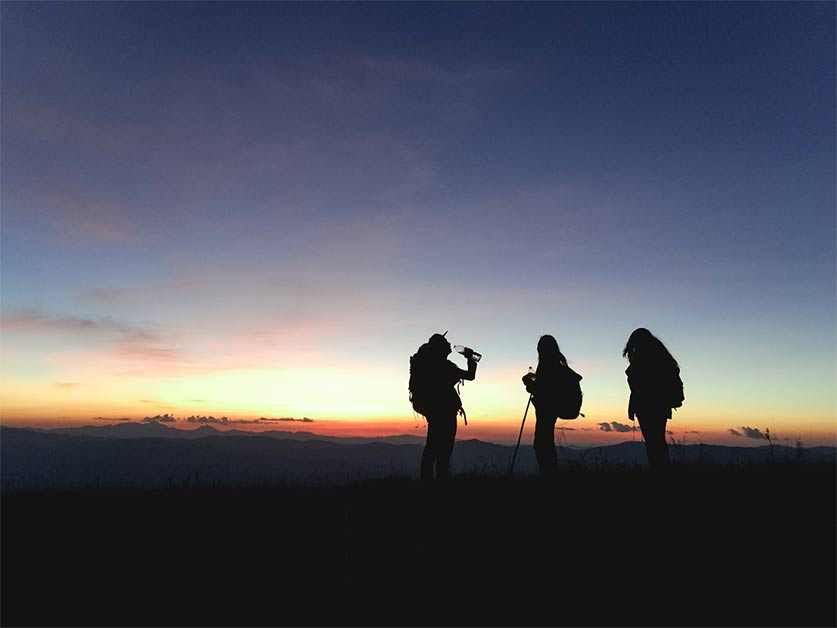
Besides guiding you on trekking trails, the biggest help travel guides offer is helping you understand the local community. If you have luggage then it is good to hire a porter, that helps to get relief for a long day trek.
They also can help to choose the best food available in the region. The authorized travel agencies in Nepal can help you provide the facilities of licensed and experienced guides and porters.
How much does it cost to trek to Everest Base Camp?
There are various Everest Base Camp trekking packages. The cost of EBC treks includes the price of flights, food, accommodation, insurance, gear, and the cost of hiring a guide and others.
The flight from Kathmandu to Lukla costs around $177. If you choose the EBC trek via Jiri, you won’t have to bear the cost of the flight. You can have various options for accommodation. The tea houses along the trekking trail are quite cheap, but you can also find some luxurious hotels on the side of small tea shops.
The accommodation in the EBC trek depends on the facilities you choose. Keep in mind, the higher you go, the higher will be the cost of accommodation.
The cost of the permit to the Everest region cost is different according to nationality. Likewise, the prices of guides and porters range from $20 to $40 per day.
There may be some miscellaneous expenses like giving out some amount to the locals, tipping guides and porters, and others.
Mostly, the cost of the EBC Trekking package starts from $900 and may cost up to $1500 according to the package you choose and how long is your trip. The cost covers your accommodation, breakfast, lunch and dinner, and your flights.
The package cost doesn’t cover expenses like bottled water, wifi in the guesthouses, and electricity to charge your phone, camera, and power bank.
EBC Trek packing list for Female Travelers
Summiting the Everest Base Camp is not a cakewalk. So, to make it easy for you, we have assembled the things needed to reach the Everest Base Camp successfully. Here are the things you will need to carry while trekking in the Everest region.
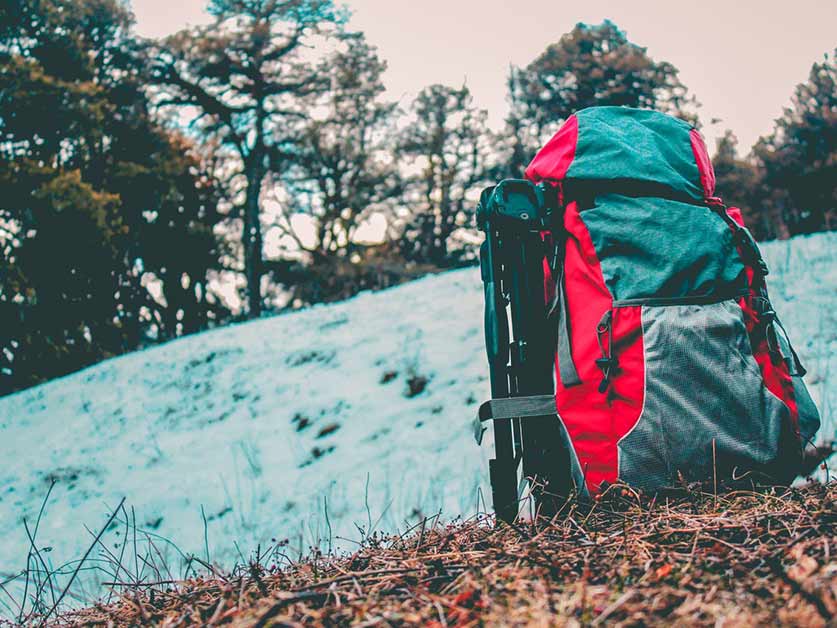
Clothes
- 2 pairs of comfortable and convertible trousers. You can convert it into shorts when needed.
- Full-sleeved warm t-shirt and half-sleeve t-shirt
- 2 pairs of padded trek socks, cool-max trekking socks, and lining socks
- Breathable underpants
- Pair of comfortable sports bra
- Long Johns
- Down trousers to keep you warm
- Trekking boots
- Hiking sandals
- A pair of downshoes
- Windproof jacket
- Waterproof trousers
- Pair of windproof and Lining gloves
- Down Jacket
- Scarf
Medications
- Blister plasters for feet
- Diamox tablets to prevent Acute Mountain Sickness
- Diarrhea tablets
- First Aid box
- Water purification tablets
Gear
- Trekking poles to climb and descend the steep slop easily
- Head torch to trek in the dark and to go to the toilet at night
- A warm sleeping bag and sleeping bag liner
- Rucksack
- Sun and snow glasses
- Water bottle
- Waterproof sack to keep your gadgets safe
- Gaiters
Toiletries
- Sunscreen cream
- Hand Sanitizer
- Shampoo
- Talcum powder
- Travel wash
- Face masks
- Lip balm to prevent dry lip
- Tampons or sanitary pads
Frequently Asked Questions
Here are Everest Base Camp Trek FAQs commonly asked by our visitors so before ending this long article we are going to write about it.
Where is Everest Base Camp?
The highest peak in the world, Mt. Everest sits on the border of Nepal and Tibet. The mountain lies in the Everest region. Everest region is located in eastern Nepal, 160.51 kilometers away from Kathmandu, the capital city. The region is rich in both culture and nature.
What is the elevation of Everest Base Camp?
The highest mountain in the world, Mt. Everest is currently measured at 8,848.86 meters above sea level which was 8,840 meters when measured for the first time in 1956. The South Everest Base Camp sits at an elevation of 5,364 meters whereas North Base Camp is at 5,150 meters. To reach the summit of South Base Camp, follow the routes available in Nepal whereas North Base Camp is accessible through Tibet only.
How high is Everest Base Camp in comparison to other base camps?
Everest Base Camp, at an altitude of 5,364 meters is one of the most popular areas for trekking. Though Nepal has several trekking routes leading to the base camp of diverse mountains, the experience and altitude we achieve at Everest Base Camp are unparalleled. Many popular peaks in the world are less higher than Everest Base Camp, for example, Kilimanjaro is 4900 meters and Mount McClintock is just 3,490 meters high.
How long is Everest Base Camp?
The distance from Lukla to Everest Base Camp is 62 kilometers. You will have to walk for 5 to 9 hours every day to complete the trek in 9 to 10 days.
How long does it take to walk to Mt. Everest Base Camp?
The days needed to reach the base camp vary depending on the route. If you choose to climb the Everest Base Camp from Jiri, it will take you 23 to 25 days to complete the trek whereas, from Lukla, it will take you around 14 to 16 days.
How to get to Everest Base Camp?
If you want to take a long route from Jiri, you can drive to Jiri from Kathmandu and begin the trek with the help of guides, however, if you want to climb from Lukla, you will have to fly to Lukla from Kathmandu. Porters will carry your belongings and guides will take proper care of you throughout the trek.
Where is Base Camp on Mt. Everest?
The Everest Base Camp is located a few meters away from Gorakshep, a small settlement below Mt. Pumori and Kala Patthar.
Is there WiFi on Everest Base Camp Trek?
Yes, there are only two free hotspots along the EBC trek trail, at a bakery in Namche Bazaar and Starbucks in Lukla. It costs anywhere between $3 to $10 in the guesthouses. WiFi connection may be poor during peak hours. But, we recommend you buy an Ncell sim before going on the trip as Ncell works at 50% of the guesthouses. Since 2010, there has been 3G connectivity on the Everest Base Camp Trek for the Ncell network.
How difficult is the Everest base camp trek?
EBC trek is the most popular trek in Nepal, with around 30,000 tourists visiting each year. The name alone conjures that the trek to the soaring peaks and high altitudes may be difficult enough.
How safe is the Everest Base Camp trek?
Well, this is one of the frequently asked questions. Only a handful of people make it to the top of Mount Everest each year, and most of the people trek up to the base camp. Except for using the helicopter, the only way you get to the base camp is by walking through the Khumbu Valley from Lukla. Regardless of the increasing altitudes, the journey is achievable to the one who is physically and mentally sound. However, there are certain factors you need to consider before planning your trekking. You need to acclimatize properly to avoid AMS. Don’t take altitude sickness lightly as it can be acute sometimes.
Can you trek to Everest base camp on your own?
EBC trek is achievable independently or in a group. This trek planning can be a lot of work from all necessary permits, and accommodations to transportation and a lot of logistics to consider before and during your trek. Costs for everything can be less if you are in a group and there won’t be any problem with interaction with the locals. On the contrary, one of the biggest benefits of going on the trip on your own is you can have enough time for viewing scenes and capturing photos.
How much food is required on the Everest base camp trek?
As with any trek in a new place, food plays a big role in learning the culture of the region. Because the region is remote and all food has to be carried up to the villages either by porter or by yaks, most meals tend to be made up of non-perishable ingredients. Cereals, rice, and grains will form the staple of most dishes. Most of the local tea houses serve lentil soup, which is commonly called “dal” for lunch and dinner. You are likely to be offered the typical Nepali food, dal, and Bhat (rice). But in the case of meat, freshness can’t be guaranteed as everything is carried from lower altitudes by yaks, and the slaughtering of animals is prohibited in the area by locals. Porridge, cereal, and toast are more common on the breakfast menu.
Conclusion
Looking to conquer the mighty Everest Base Camp Trek? Learn about the best time to go, cost, route, and itinerary for this iconic adventure. Plan your ultimate trek to the highest mountain in the world with our comprehensive guide.
Hope you liked our Everest Base Camp Trek Complete Guide. Now, you can pack your bag and get ready for EBC Trekking, one of the most beautiful trekking destinations. Plan your next holiday to visit Nepal.
Love this Post. Pin it for Later
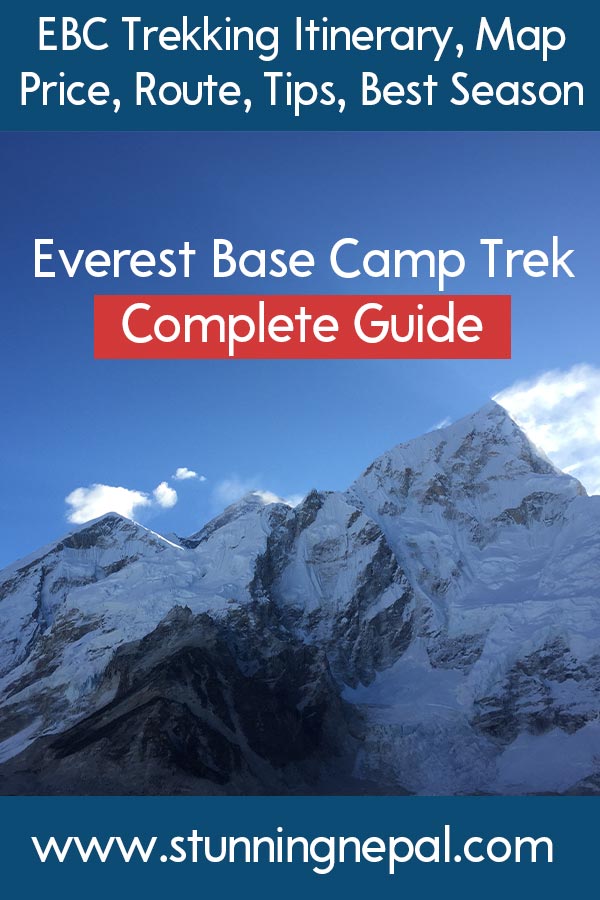



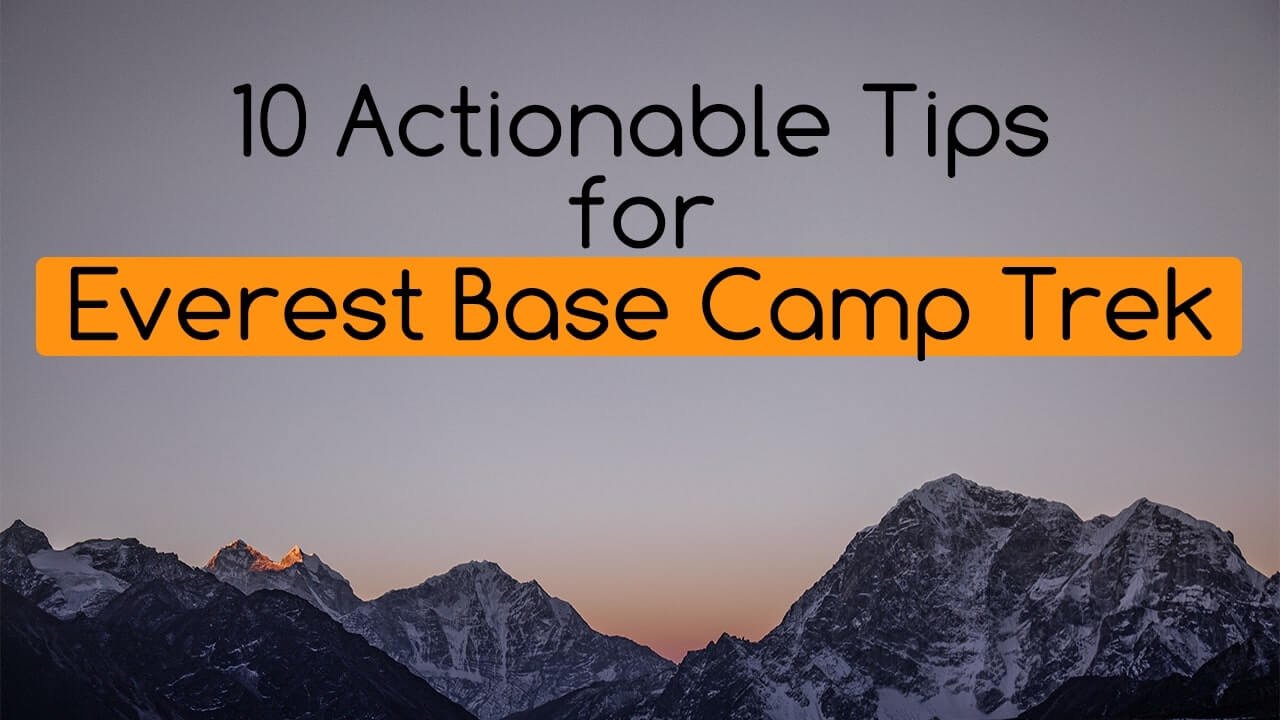

Wow !!! Complete Everest Base Camp Guide.
Thanks
Thank You for your Appreciation.
Great Insights about EBC Trek. Thanks to the Author.
Welcome!!!
The main reasons that packable down jackets have become popular over time are because they are extremely light and are more comfortable than other types of jackets. When compared to a regular jacket, which weighs up to nine pounds, a down vest weighs no more than four pounds, which makes them even more versatile when on vacation.